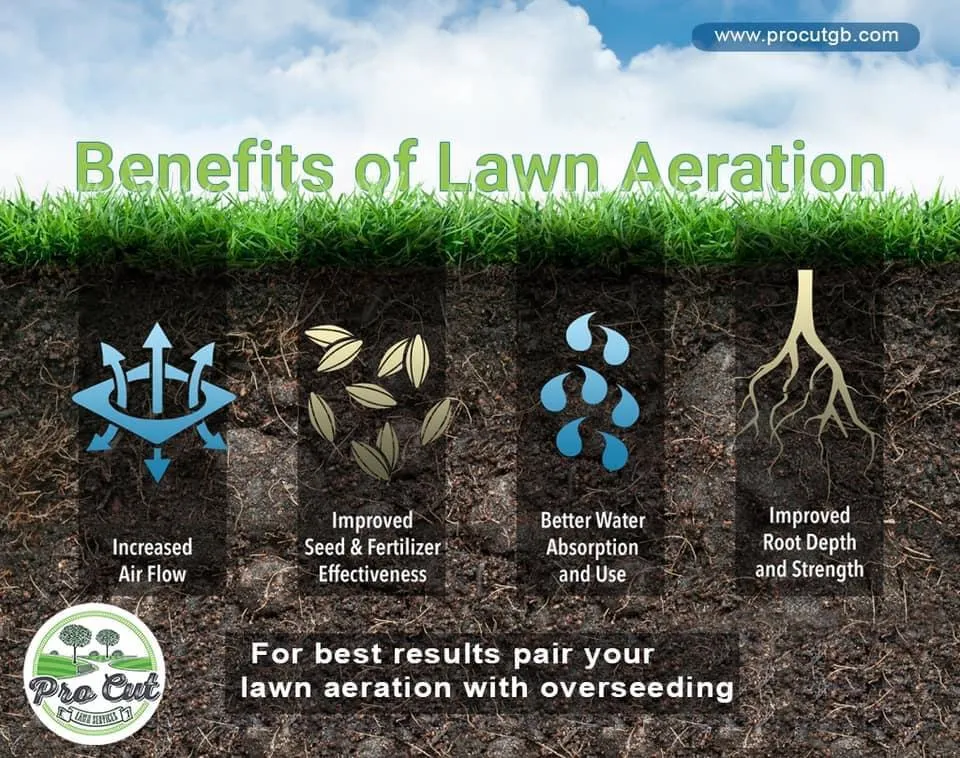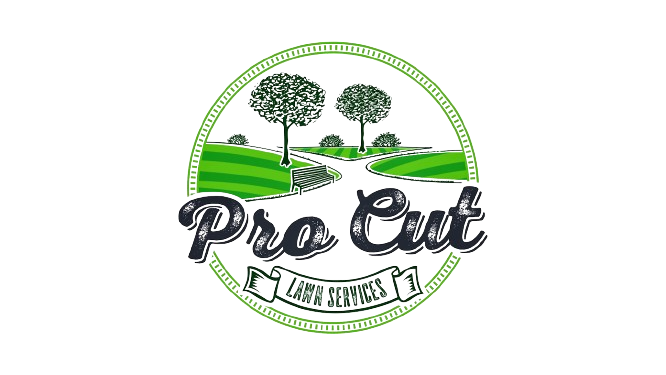Lawn Aeration
Lawn Aeration
Green Bay, WI’s Lawn Aeration & Seeding Professionals
Give your lawn a breath of fresh air with our core aeration services!

Just as you need to cut, fertilize and water your lawn to ensure its health. You also need to perform a lawn aeration which is a key component of a beautiful lawn. Core aeration involves the removal of small soil plugs or cores from the lawn. A specially designed machine extracts ½ to ¾ inch diameter soil cores up to 4’’ deep and deposits them onto the lawn.

Proper aeration of your lawn regularly will reduce thatch, soil compaction and allow more air, water, and fertilizer into the root system, promoting a healthier and greener lawn.
Lawn Seeding
Adding grass seed to your lawn may sound simple enough, but the actual process can be complex and is best handled by the lawn care professionals. We know exactly when it's time to aerate and overseed your lawn properly to ensure your grass grows correctly.
Aeration & Overseeding
With this process, we will aerate and seed your entire lawn at the same time allowing proper seed to soil contact getting the best results. As the cores break down, they create a top dressing over the seed that, with proper watering, will allow the seeds to germinate. This is a relatively inexpensive way to improve your lawn and is very effective in repairing minor problem areas. The result is a more robust lawn!
Lawn Aeration & Seeding FAQs
Our team has years of experience in lawn aeration, which makes us extremely qualified to answer any question or address any concern you may have about these services. Below you’ll find some of our clients’ most frequently asked questions.
How Long After Lawn Aeration Can I Mow My Lawn?
After lawn aeration, it's generally recommended to wait at least a few weeks before mowing your lawn. This allows time for the soil to settle back into place and for the grass seed to germinate.
When Should I Aerate My Lawn?
Fall is an excellent time to aerate cool-season grasses in Wisconsin. Aim for late summer to early fall, ideally between late August and late October. The cooler temperatures and more consistent moisture levels during this time promote strong root development and overall lawn health going into the winter dormancy period.
What should I do with the soil plugs on my lawn?
Over time, these plugs will break down and decompose, returning valuable organic matter and nutrients to the soil. It's not visually appealing initially, but it's beneficial for the health of your lawn.
To learn more about our lawn aeration services or to request a free estimate for your yard,
Green Bay, WI’s Lawn Aeration & Seeding Professionals
Give your lawn a breath of fresh air with our core aeration services!

Just as you need to cut, fertilize and water your lawn to ensure its health. You also need to perform a lawn aeration which is a key component of a beautiful lawn. Core aeration involves the removal of small soil plugs or cores from the lawn. A specially designed machine extracts ½ to ¾ inch diameter soil cores up to 4’’ deep and deposits them onto the lawn.

Proper aeration of your lawn regularly will reduce thatch, soil compaction and allow more air, water, and fertilizer into the root system, promoting a healthier and greener lawn.
Lawn Seeding
Adding grass seed to your lawn may sound simple enough, but the actual process can be complex and is best handled by the lawn care professionals. We know exactly when it's time to aerate and overseed your lawn properly to ensure your grass grows correctly.
Aeration & Overseeding
With this process, we will aerate and seed your entire lawn at the same time allowing proper seed to soil contact getting the best results. As the cores break down, they create a top dressing over the seed that, with proper watering, will allow the seeds to germinate. This is a relatively inexpensive way to improve your lawn and is very effective in repairing minor problem areas. The result is a more robust lawn!
Lawn Aeration & Seeding FAQs
Our team has years of experience in lawn aeration, which makes us extremely qualified to answer any question or address any concern you may have about these services. Below you’ll find some of our clients’ most frequently asked questions.
How Long After Lawn Aeration Can I Mow My Lawn?
After lawn aeration, it's generally recommended to wait at least a few weeks before mowing your lawn. This allows time for the soil to settle back into place and for the grass seed to germinate.
When Should I Aerate My Lawn?
Fall is an excellent time to aerate cool-season grasses in Wisconsin. Aim for late summer to early fall, ideally between late August and late October. The cooler temperatures and more consistent moisture levels during this time promote strong root development and overall lawn health going into the winter dormancy period.
What should I do with the soil plugs on my lawn?
Over time, these plugs will break down and decompose, returning valuable organic matter and nutrients to the soil. It's not visually appealing initially, but it's beneficial for the health of your lawn.
To learn more about our lawn aeration services or to request a free estimate for your yard,
Contact Pro Cut Lawn Services Today!
Get A Free Quick Quote
Or call (920) 595-1486
Get A Free Quick Quote
Or call (920) 595-1486
FAQS
How often should I mow my lawn?
Our mowing recommendation is to mow the lawn each week as needed, keeping it at a minimum height of three inches.
What's the benefit of lawn aeration and overseeding?
Aeration allows air, water, and nutrients to penetrate the soil, promoting healthier root growth and overall lawn health. Over-seeding introduces new grass seed to thicken your lawn, improving its appearance and resilience. Together, they rejuvenate your lawn, making it more resistant to weeds and disease.
How can I ensure an eco-friendly lawn care service?
To ensure eco-friendly lawn care, ask your provider about their practices. Look for companies that use organic or low-impact fertilizers, minimize pesticide usage, and promote sustainable lawn care practices. Regular soil testing and custom treatment plans can also reduce the need for excessive chemicals while maintaining a vibrant lawn.
How often should i water my lawn
We recommend 1-1.5 inches of water throughout the week, which equates to about 20 minutes of watering per zone five days a week. Watering should be done in the morning hours, if possible, to reduce the risk of turf diseases.
FAQS
How often should I mow my lawn?
Our mowing recommendation is to mow the lawn each week as needed, keeping it at a minimum height of three inches.
What's the benefit of lawn aeration and overseeding?
Aeration allows air, water, and nutrients to penetrate the soil, promoting healthier root growth and overall lawn health. Over-seeding introduces new grass seed to thicken your lawn, improving its appearance and resilience. Together, they rejuvenate your lawn, making it more resistant to weeds and disease.
How can I ensure an eco-friendly lawn care service?
To ensure eco-friendly lawn care, ask your provider about their practices. Look for companies that use organic or low-impact fertilizers, minimize pesticide usage, and promote sustainable lawn care practices. Regular soil testing and custom treatment plans can also reduce the need for excessive chemicals while maintaining a vibrant lawn.
How often should i water my lawn
We recommend 1-1.5 inches of water throughout the week, which equates to about 20 minutes of watering per zone five days a week. Watering should be done in the morning hours, if possible, to reduce the risk of turf diseases.
